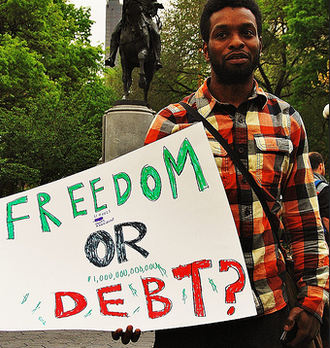Expected Bill Would Allow Private Student Loan Debt To Be Discharged In Bankruptcy
If at first you don’t succeed, try again with a more drastic measure. Just two weeks after a bill to allow private student loan borrowers to refinance at lower interest rates failed to gain traction in the Senate, a new bill expected to be introduced this week takes things a step farther.
The bill, from Iowa senator Tom Harkin, would create an option in which private student loans could be discharged through bankruptcy proceedings, according to the Wall Street Journal.
While that might seem like a dramatic measure, the impact would be rather small when looking at total student loan debt in the United States. Private lenders only hold about 10% to 15% of all student loan debt; the rest is held by the U.S. Education Department.
Under current federal law, neither federal nor private student loans can be discharged in bankruptcy. Other debts such as money owed on mortgages, credit cards and auto loans can be discharged in bankruptcy.
Consumer advocates have long said the prohibition of discharging student debt in the case of bankruptcy is keeping borrowers buried under high debt burdens that they have little chance of digging themselves out of.
On the other hand, those who support the status quo have argued it reduces the risk that borrowers will walk away from debts and in turn keeps interest rates in check.
Harkin’s bill also reportedly contains measures that would ease student costs, hold schools with high default rates accountable and mandate that colleges reveal data on the outcomes of their students.
With one-in-three students loans considered delinquent and often affecting a student’s ability to make purchases in the future, the bill could offer much-needed reprieve for college students left with mountains of both federal and private student loans. However, the likelihood of the bill moving forward this session is slim, the WSJ reports.
The debt burden created by student loans seems to be at the forefront of legislators’ minds this year with a number of bills being introduced. However, little has actually been accomplished on the front.
Just two weeks ago a bill that would have allowed consumers to refinance their student loans to the rate currently being issued on new federal and private student loans died in the Senate. The Bank On Students Emergency Loan Refinancing Act, introduced in May by Sen. Elizabeth Warren, fell short of the 60 votes needed to end debate and move on to a final vote.
The Act would have allowed federal and private student loan borrowers to refinance to rates set for first-time borrowers – approximately 3.86%.
In early June, student borrowers received a bit of good news as President Obama signed an executive order that expanded a federal loan forgiveness plan to 5 million additional consumers who borrowed before October 2007 or those who have not borrowed since October 2011. The Pay As You Earn program allows students who borrowed federal direct loans to cap their loan payments at 10% of their monthly incomes.
While the order could be considered a big win for consumers, as Consumerist reported in April the debt forgiven by government programs has added up more quickly than anticipated. At its current rate the Pay As You Earn plan is expected to reach $14 billion next year, exceeding government expectations by 90%.
Legislators have also looked into attacking student loan debt concerns before they become an issue for borrowers. Back in April, Sen. Sherrod Brown from Ohio gave new life to the 2013 Know Before You Owe Act, a bill that would require much fuller disclosures for private student loan terms and options.
Harkin Opens Door To Bankruptcy Option for Student Loans [The Wall Street Journal]
Want more consumer news? Visit our parent organization, Consumer Reports, for the latest on scams, recalls, and other consumer issues.


